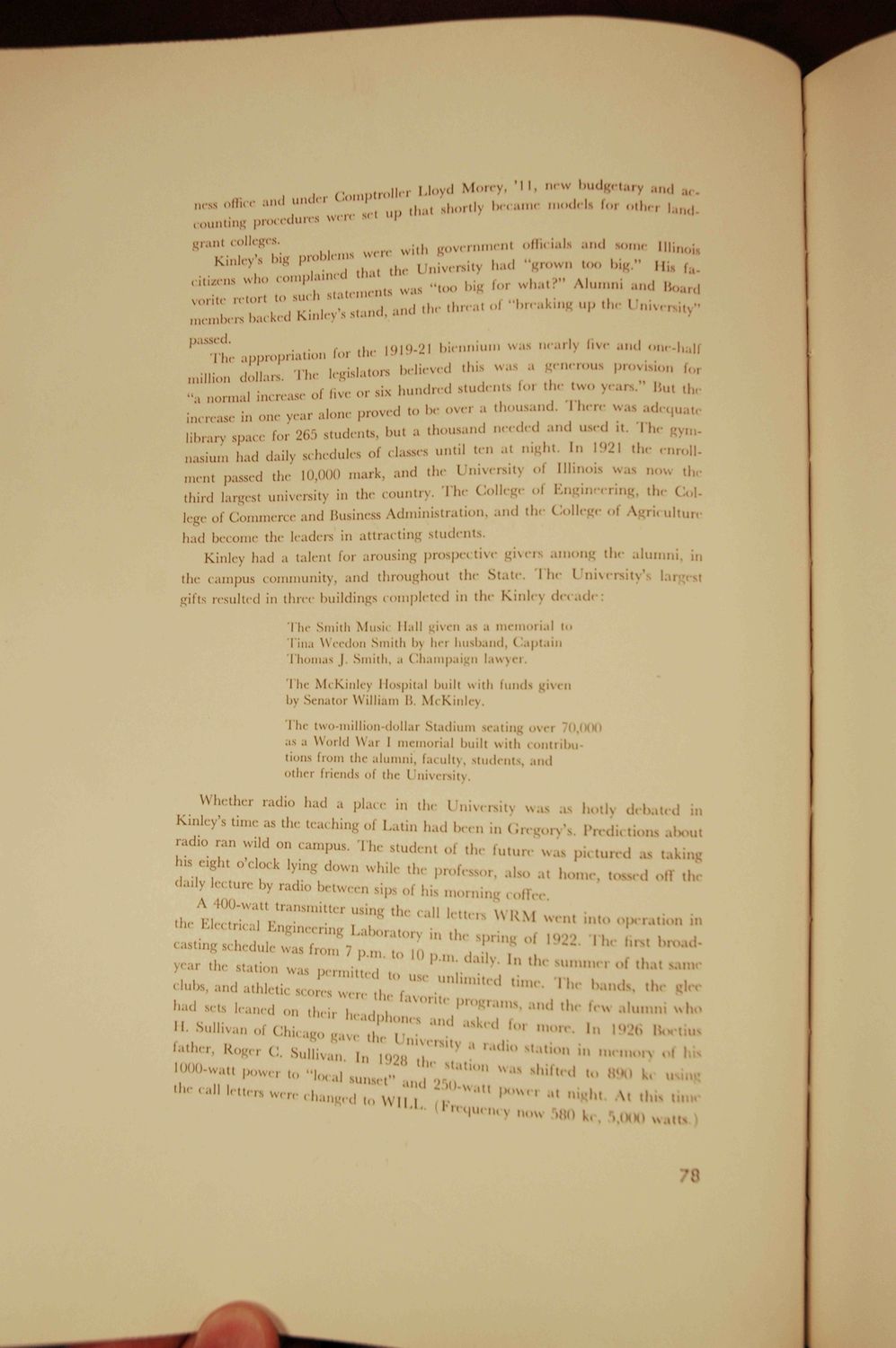| |
| |
Caption: Book - Illini Years
This is a reduced-resolution page image for fast online browsing.

EXTRACTED TEXT FROM PAGE:
, u r Comptroller Lloyd Morey, '11, new budgetary .„„! ., n officC a n nd ^ ^" I« the, !.,„„ w ° , c t up that »hortl, bee, counting procedures wtn I rant colleges. .,„ ,,„„ ;.,|s a n d „,,,,„. „,; go Kinley, blg probes w e r e — "'"" ^ T i m e n u wa, "too big for what?" A l vnrite retort to such stan n» " , ,, „„ :;„„;,, M X P asscd ****• «""•• a, ° 1 "^"p*- > * . . , 1919.21 biennium was nearly five and «.,„ l,.,]| The appropriation loi •"< ' • _ , dollar,. The legislator, believed this wa , generous proy, for hi normal increase of five or six hundred students foi the two yea. But th increase in one year alone proved to be ovci a .1H.US.OH1. rhere was adequ library space for 265 students, but a thousand «.., <h<l and used it. I In- „,. nasium had dail) schedules of classes until ten ... night. In 1921 th- nroll,, , m cnt passed the 10,000 mark, and the Universit) ol Illinois u third largest university in the country. The College ol Bi necring, the ( ollege of Commerce and Business Administration, and the ( k>IIc » Agri< ultun 1 had become the leaders in attracting students. Kinley had a talent for arousing prospective givers among the alumni, in the campus community, and throughout the State. Hie University' lai gifts r e s u l t e d in t h r e e b u i l d i n g s c o m p l e t e d in t h e K i n l t \ d-•. .u\< The Smith Musi. 11.ill given .1^ a memorial u> I in.1 Wccdon Smith b) hci husband, ( aptain Thomas J. Smith, .1 Champaign lawyei The McKinley Hospital built with funds given by Senator William B. McKinley. The two-miilion-dollai Stadium ovei as .1 World War I memorial built with contributions from the alumni, fa< ulty, students, and other friends ol the I Iniversity. Whether radio had .. place in thi I niversit) was as I I) debated in Kinley's time as the tca< hing of Latin had been in ()i Predi< ti< abou radio ran wild on campus. The student of the future was pictured as takin his eight o'clock lying down while the prol r, alsi it home, tossed 1 daily lecture by radio between sip- of his mornh i ofTcc, A 400-watl transmitter using the call letters WRM went int. n the Electrical Engineering Laboratory in the spring ol 1 I In first bi I(asting schedule was from 7 p.m. to 10 p.m. daily. In the summei ol that sam i the station was permitted to use unlimited time, Phc bands, the glc clubs ,l = •'" athletic scores were the favorite programs ind the fi * alui wh ,, l(l M K , c a n e d ,,l( ' '"' " headphones and as! | foi more. In 1926 I Su,Iivanoj "• Chicago gav( the l , m ity a radio station in mem 1 ,, , ,<,, " "• "" C. Sullivan. In 1928 the station was shifted t, M,, , the , ,< W ' , n I,hit, ,, ' all W(' "'•'-'-,,»d250.w.u, ttl chai " I««WILL Frequency no* night It thb •a
| |